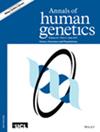An exploration of the genetics of the mutant Huntingtin (mHtt) gene in a cohort of patients with chorea from different ethnic groups in sub-Saharan Africa
Abstract
Background
Africans are underrepresented in Huntington's disease (HD) research. A European ancestor was postulated to have introduced the mutant Huntingtin (mHtt) gene to the continent; however, recent work has shown the existence of a unique Htt haplotype in South-Africa specific to indigenous Africans.
Objective
We aimed to investigate the CAG trinucleotide repeats expansion in the Htt gene in a geographically diverse cohort of patients with chorea and unaffected controls from sub-Saharan Africa.
Methods
We evaluated 99 participants: 43 patients with chorea, 21 asymptomatic first-degree relatives of subjects with chorea, and 35 healthy controls for the presence of the mHtt. Participants were recruited from 5 African countries. Additional data were collected from patients positive for the mHtt gene; these included demographics, the presence of psychiatric and (or) cognitive symptoms, family history, spoken languages, and ethnic origin. Additionally, their pedigrees were examined to estimate the number of people at risk of developing HD and to trace back the earliest account of the disease in each region.
Results
HD cases were identified in all countries. Overall, 53.4% of patients with chorea were carriers for the mHTT; median tract size was 45 CAG repeats. Of the asymptomatic relatives, 28.6% (6/21) were carriers for the mHTT; median tract size was 40 CAG. No homozygous carries were identified. Median CAG tract size in controls was 17 CAG repeats. Men and women were equally affected by HD. All patients with HD—bar three who were juvenile onset of <21 years—were defined as adult onset (median age of onset was 40 years). HD transmission followed an autosomal dominant pattern in 84.2% (16/19) of HD families. In familial cases, maternal transmission was higher 52.6% (10/19) than paternal transmission 36.8% (7/19). The number of asymptomatic individuals at risk of developing HD was estimated at ten times more than the symptomatic patients. HD could be traced back to the early 1900s in most African sites. HD cases spread over seven ethnic groups belonging to two distinct linguistic lineages separated from each other approximately 54–16 kya ago: Nilo-Sahara and Niger-Congo.
Conclusion
This is the first study examining HD in multiple sites in sub-Saharan Africa. We demonstrated that HD is found in multiple ethnic groups residing in five sub-Saharan African countries including the first genetically confirmed HD cases from Guinea and Kenya. The prevalence of HD in the African continent, its associated socio-economic impact, and genetic origins need further exploration and reappraisal.


 求助内容:
求助内容: 应助结果提醒方式:
应助结果提醒方式:


